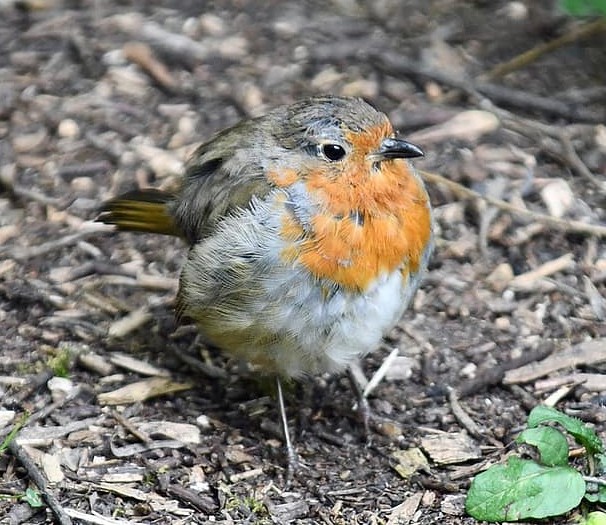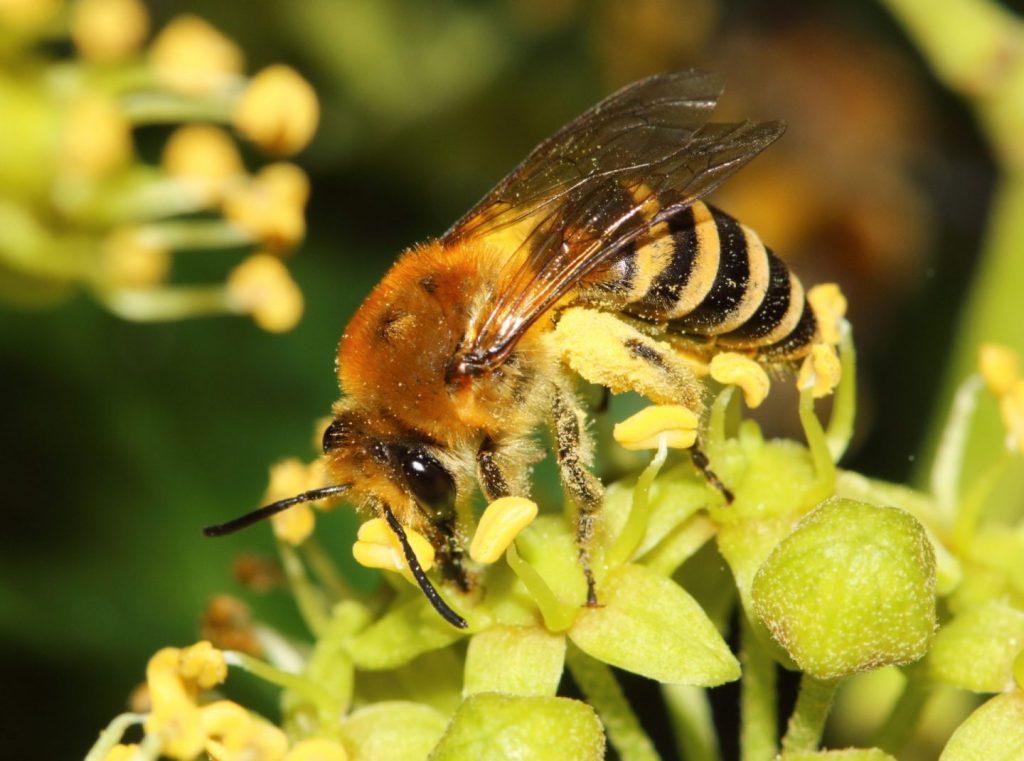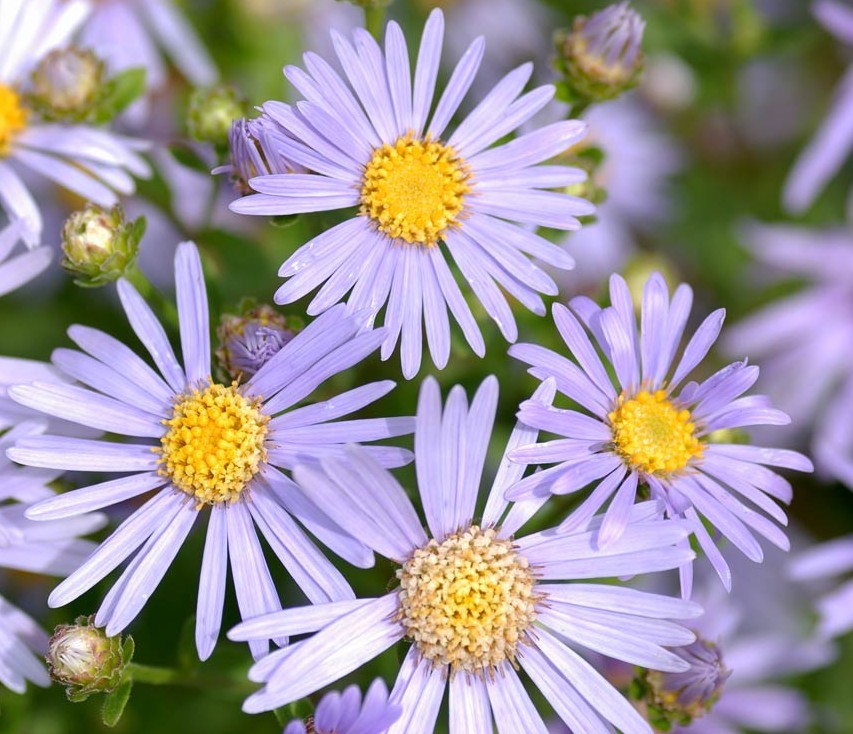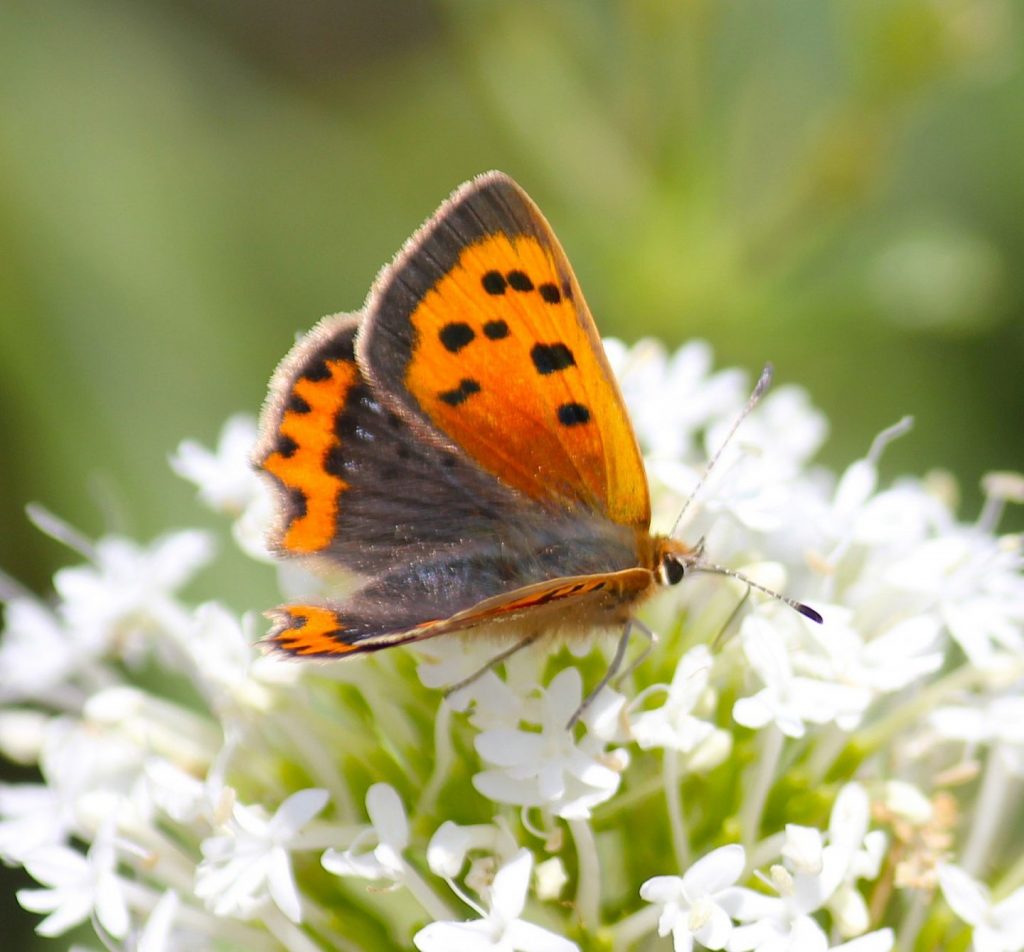In August and September we expect pollinators to be plentiful, but with rain and wind, numbers can be down. Insectivorous birds like swifts, swallows and flycatchers are declining long-term because of ever decreasing numbers of flying insects. High summer is a peak for various nectar-rich flowers including knapweed, thistles and birds-foot trefoil. Seeds are setting and first wild berries, like rowen, are ripening so there’s plenty of natural food for wildlife.
What to look out for
Swift are departing in August, but Swallows and House Martins may, if feeding is good, lay a third clutch of eggs and rear their young before they leave our shores. Bird song is much reduced now with only robins and a few others singing briefly. But adults and young make a variety of simpler ‘calls’: begging for food, keeping in contact, and making alarm and threat calls? Young naive birds can be seen exploring, trying to find food.
In August some people worry that garden birds seem to have disappeared. Have they migrated, died of disease, been predated? None of these, it’s the summer moult! It takes birds 6 to 8 weeks to replace all their feathers, during which time they are low in energy, weaker flyers and more vulnerable to predators, so they keep out of sight in denser vegetation. Now is a good time to moult as there’s food aplenty and weather’s warm, usually. They’ve finished breeding, so no problem looking tatty for a while and, for migrants, feathers must be in tiptop condition for arduous flights soon to come.
Some familiar butterflies, red admirals, peacocks, commas and browns are with us until early autumn and beautiful small coppers and holly blues can be seen too. You may encounter large caterpillars away from their food plants looking for somewhere sheltered and safe to pupate. The aptly named ivy bee is the last emerging solitary bee and can be found taking pollen from ivy flowers from early September to November. Amazingly, the ivy bee was first discovered as a new species in 1993 and first appeared in mainland UK in 2001. There are plenty of moths about too which means bats are busy. At this time, a common dragonfly often away from water is the migrant hawker, flown in from the Continent.
Things to do (and not do)
Hedgehogs need plenty of food to build up fat for the winter and build a house or two for them to hibernate in. Windfall fruit is great for birds, small mammals and even butterflies, so leave them on the ground but not close to hiding places where predators, mainly cats, can catch youngsters easily.
Continue to dead-head flowers but allow some seedheads to develop for birds and don’t trim hedges and shrubs with berries until the birds have stripped them. Cut back wildflower patch from August onwards after seeds have ripened but check for hedgehogs and slowworms first. Leave the long cut grass for a few days for seed and any invertebrates to drop off.
Net your pond when the leaves start to fall so that they don’t build up, though a few are good for feeding your pond invertebrate community. Top up where necessary with rainwater if possible, remove dead growth to stop it rotting.
Wildlife Plant of the Month – Late flowering perennial Asters, commonly known as Michaelmas Daisies come in a range of flowering times from August to October and make a great addition to a garden to support pollinators into the autumn. From a nectar source point of
view avoid the few pom-pom forms. They die back to ground level in the winter but don’t cut down the dead stems until late winter as they provide seed for goldfinches and shelter for all sorts.
Colin Ryall




